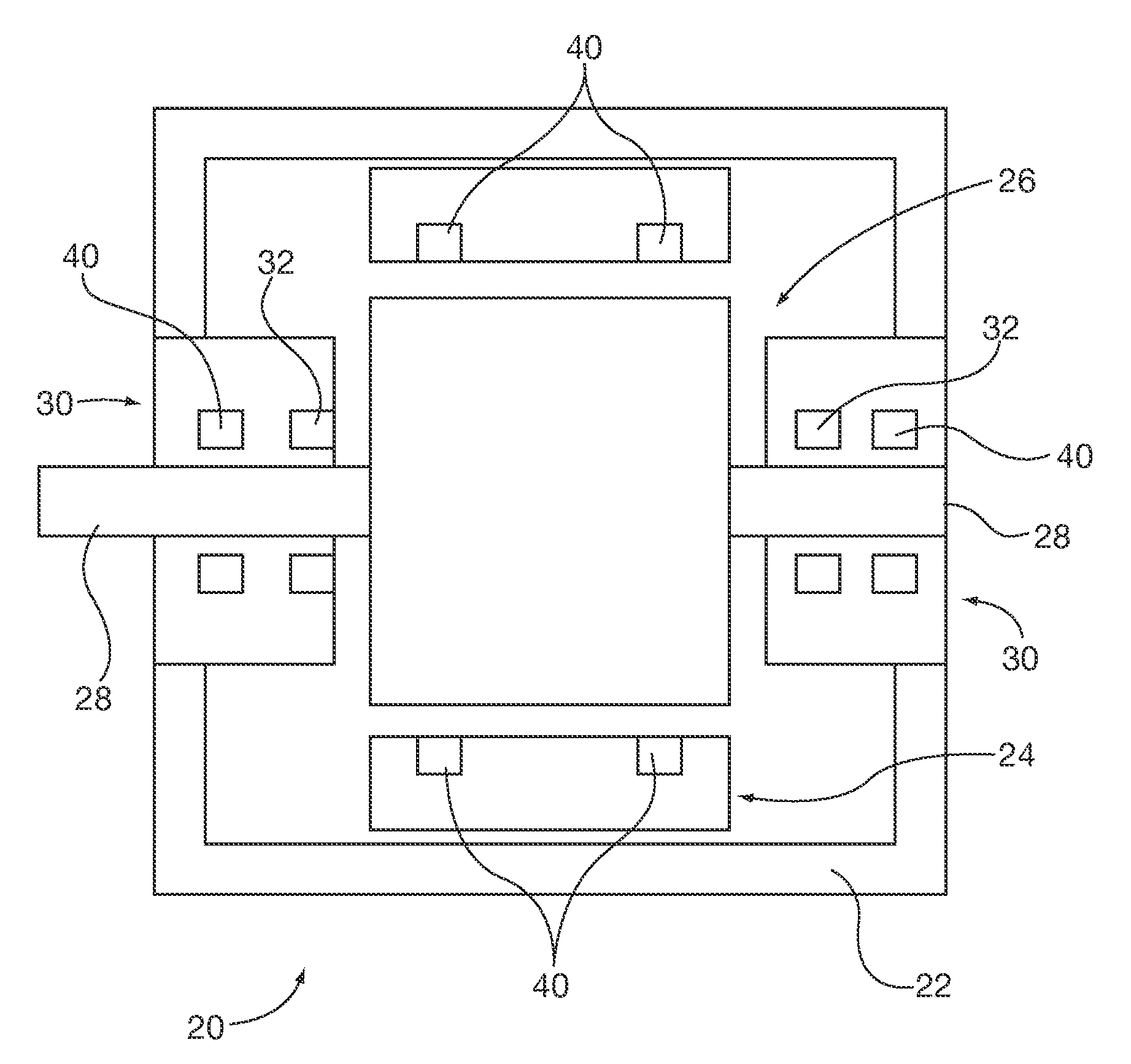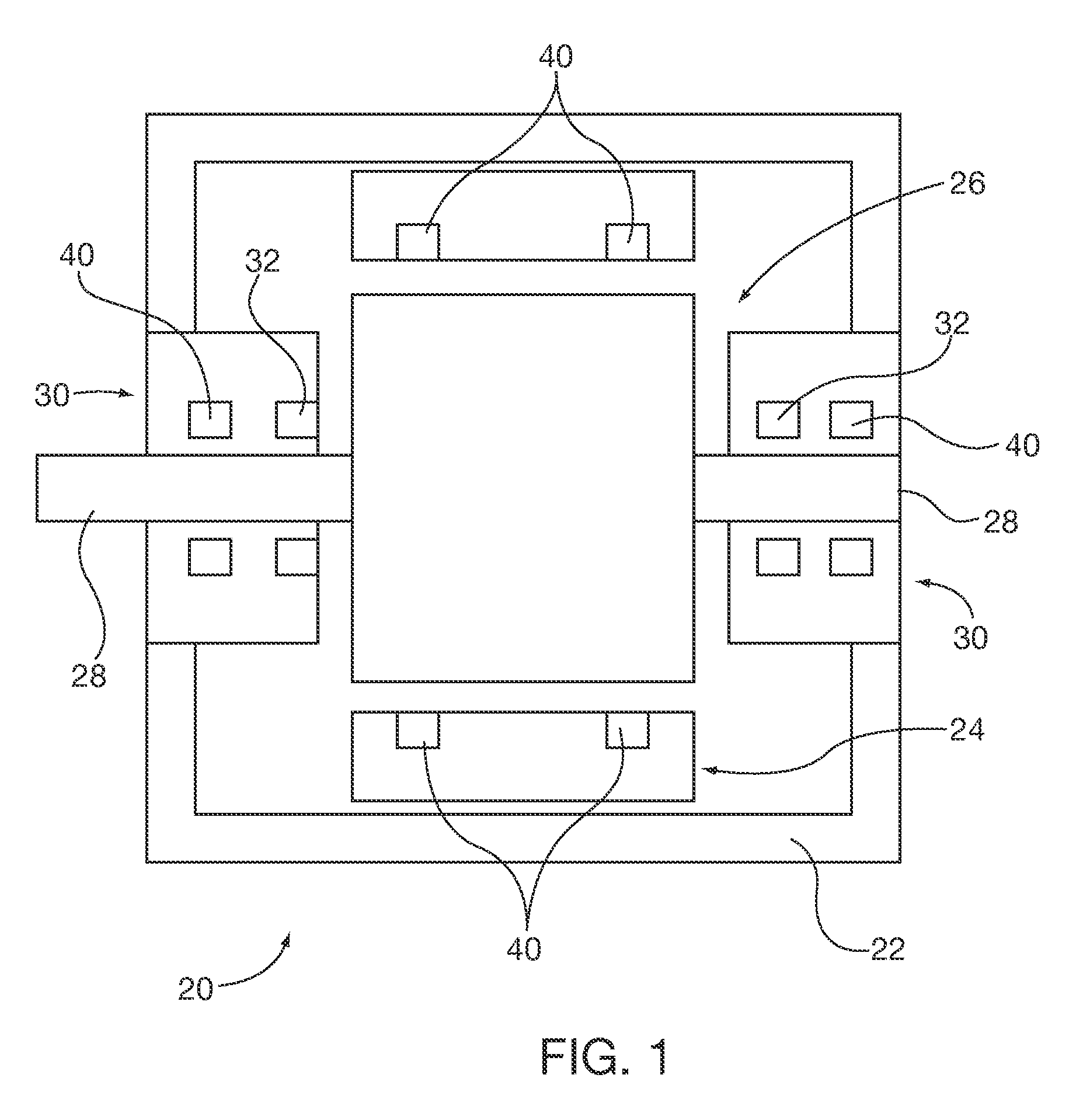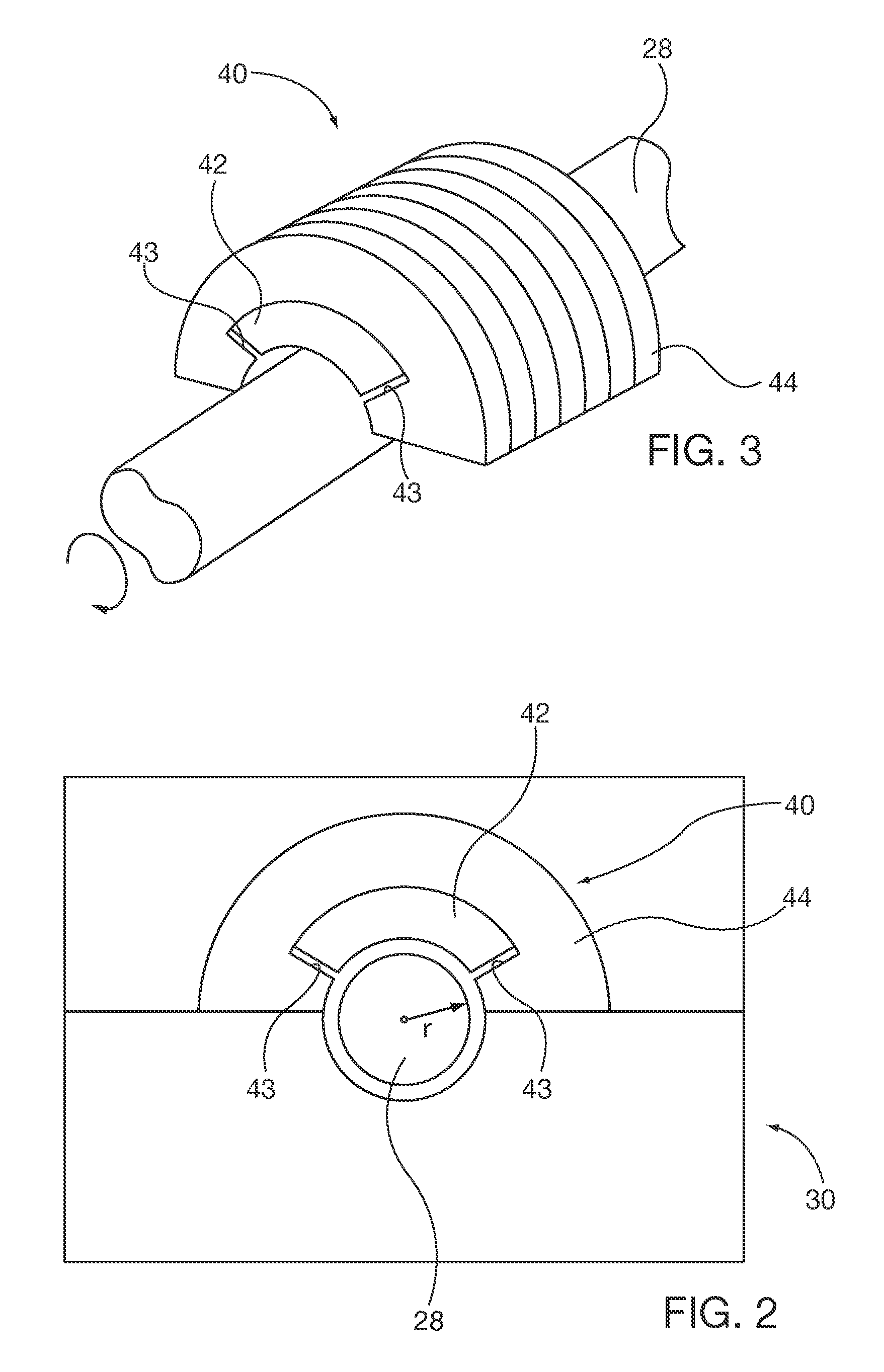Passive magnetic bearings for rotating equipment including induction machines
a magnetic bearing and rotating equipment technology, applied in the direction of mechanical energy handling, dynamo-electric components, mechanical equipment, etc., can solve the problems of premature bearing/shaft wear, bearing rotation instability and/or premature bearing/shaft wear, auxiliary systems add installation and maintenance expenses to a machine installation, etc., to enhance lubricated bearing stability, reduce bearing energy consumption or frictional losses, and reduce machine wear.
- Summary
- Abstract
- Description
- Claims
- Application Information
AI Technical Summary
Benefits of technology
Problems solved by technology
Method used
Image
Examples
embodiment 150
[0039]The permanent magnet axial thrust bearing embodiment 150 is shown in FIG. 11, and includes a mounting bracket formed in the bearing housing 130A. An annular shaped permanent magnet 152 circumscribes the rotor shaft 128 and generates an upwardly directed magnetic field that is shaped by electrical steel core 152 and the electrical steel core 156 that is affixed to the rotating shaft 128. The electrical steel core 156 is formed with a hub portion 155A that is concentric with and spaced away from the inner diameter of the permanent magnet 152 and a flange portion 155B radially projecting from the hub portion and in abutting contact with an axial face of the permanent magnet.
embodiment 50
[0040]The permanent magnet axial thrust bearing 150 can be used in applications other than to support weight of a vertically oriented rotor shaft. For example, they may be applied to horizontally oriented shaft rotors directly on the shaft as a substitute for the embodiment 50 shown in FIGS. 7 and 8. Alternatively they may be applied to the rotor laminations as is shown in the induction machine embodiment of FIG. 1 by orienting the mounting bracket proximal and parallel to one or both ends of the rotor 26 lamination stack. In such an application the rotor laminations substitute for the electrical steel core 156.
[0041]FIG. 12 schematically depicts the magnetic fields and resultant magnetic forces Fr, Fu that are imparted on the vertically oriented rotor 126. As with other embodiments described herein, the resultant preload forces magnitudes and directions imparted on the vertical rotor shaft 128 can be selectively chosen for any given application.
PUM
 Login to View More
Login to View More Abstract
Description
Claims
Application Information
 Login to View More
Login to View More - R&D
- Intellectual Property
- Life Sciences
- Materials
- Tech Scout
- Unparalleled Data Quality
- Higher Quality Content
- 60% Fewer Hallucinations
Browse by: Latest US Patents, China's latest patents, Technical Efficacy Thesaurus, Application Domain, Technology Topic, Popular Technical Reports.
© 2025 PatSnap. All rights reserved.Legal|Privacy policy|Modern Slavery Act Transparency Statement|Sitemap|About US| Contact US: help@patsnap.com



